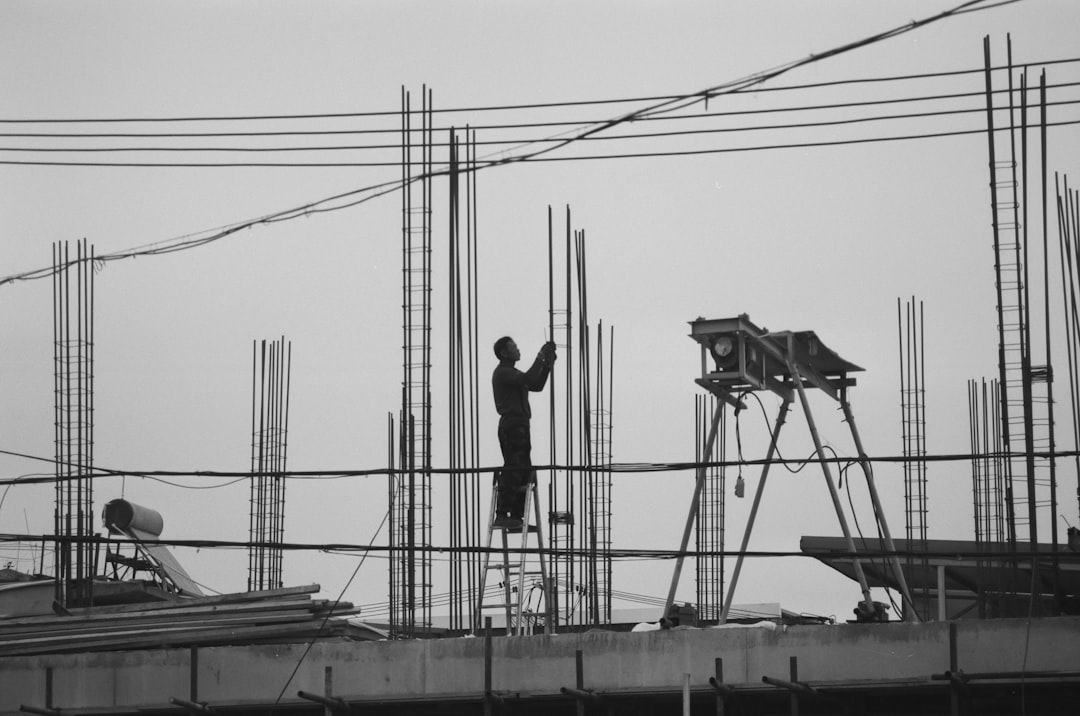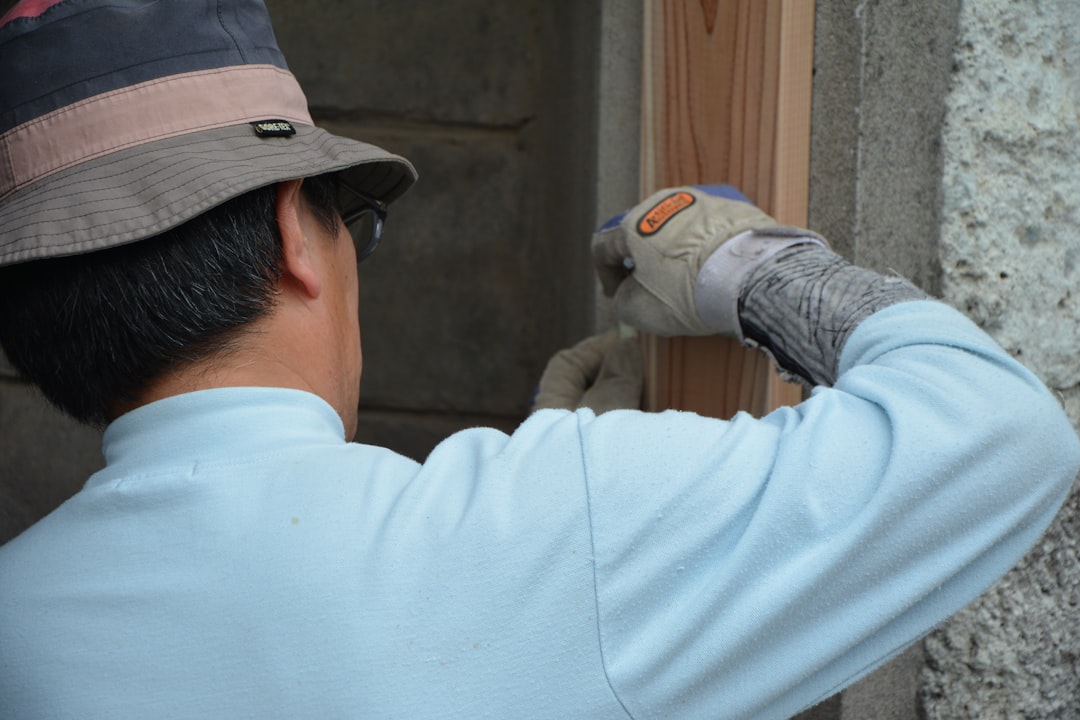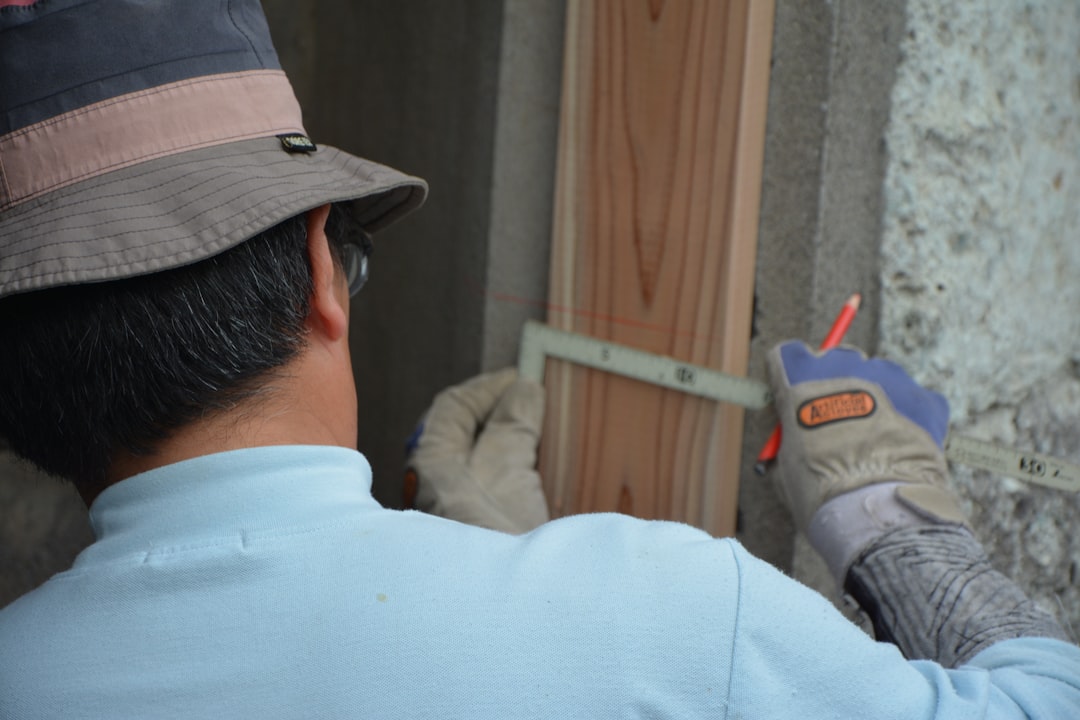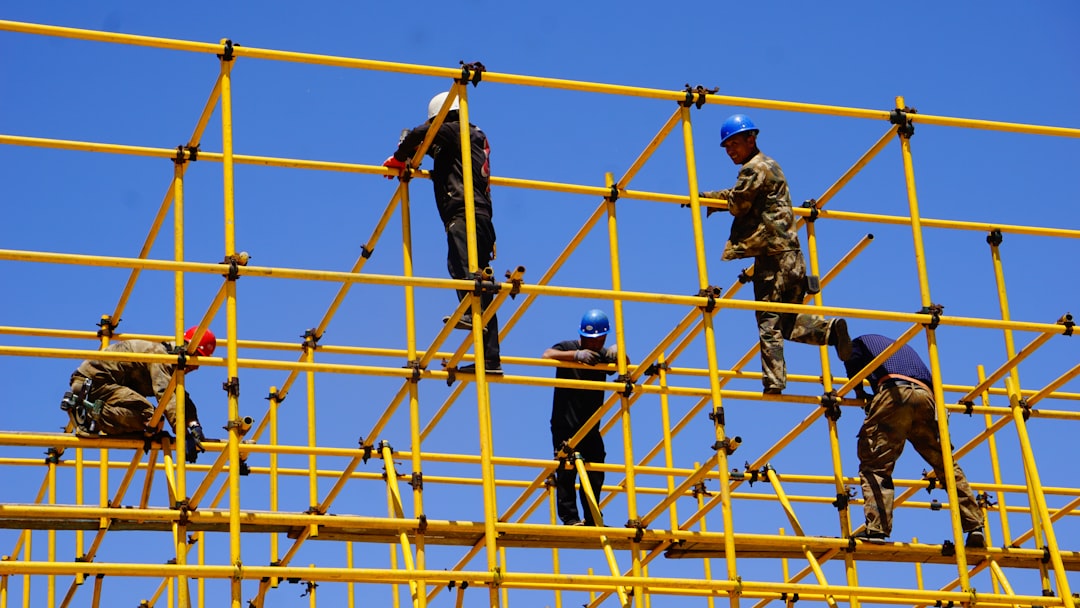

Engage prospects with a scan and streamline customer engagement with FREE QR code marketing tools by Sona – no strings attached!
Create a Free QR CodeFree consultation

No commitment

Engage prospects with a scan and streamline customer engagement with FREE QR code marketing tools by Sona – no strings attached!
Create a Free QR CodeFree consultation

No commitment
Today’s digitally driven construction landscape challenges masonry contractors to stand out in a highly competitive market while connecting offline activities to digital outcomes. Many firms lose valuable project leads because initial interest is not captured or tracked, which leads to missed opportunities and unreliable lead pipelines. Traditional advertising, signage, and word-of-mouth remain important, yet they often fall short on real-time engagement, tracking, and scalable lead generation, as seen in construction QR adoption.
With the urgency of timely and complete lead capture, QR codes have become a strategic tool for transforming physical touchpoints into digital entry points. Masonry contractors can facilitate instant information access, streamline lead capture, and automate follow-up by using QR codes on job site signs, vehicles, or promotional materials. This shift reduces friction for prospects, brings structure to field marketing, and enables measurable outcomes with scan analytics.
As expectations for smarter project management and customer-centric marketing rise, integrating QR codes delivers improved conversion rates, enhanced reputation, and richer customer insights. Each scan opens new opportunities and valuable data on prospect behavior. This guide explains how masonry contractors can use QR codes as an essential tool for modern marketing, workforce coordination, and consistent business growth. You will find practical examples, best practices, and an execution checklist designed for field-ready adoption without technical headaches.

Contractors often miss out on engagement from prospects who hesitate to reach out through traditional means. Many homeowners or property managers will not pick up the phone on first contact. QR codes bridge this gap by converting physical assets into instant channels for inquiry, project research, and feedback. The result is more high-intent leads and improved service responsiveness, all while giving your team visibility into which touchpoints generate demand.
In practice, QR codes turn static media into dynamic funnels. A fence banner can launch a short estimate request form. A yard sign can route to a photo gallery and FAQs. A vehicle decal can open a click-to-call option and a map to your office. Each of these moments becomes measurable with scan analytics, which means your budget allocation improves quarter after quarter.
Legacy analog processes, such as printed flyers, hand-written quote requests, and business cards without clear next steps, often leave contractors with incomplete or delayed information. This slows response times and increases the risk of competitor engagement. Digitizing these workflows with QR technology accelerates every step from inquiry to contract. You reduce errors, capture accurate contact information, and ensure each high-value interaction is tracked and nurtured with email or SMS automation.
Masonry contractors lose leads because signage and printed materials do not always offer actionable next steps. The inability to track or respond instantly to offline engagement is a significant barrier. QR codes close that gap by giving prospects a clear path from the physical touchpoint to a conversion-ready digital experience. This is particularly important for masonry, where visual proof of work, safety credibility, and scheduling transparency heavily influence buying decisions.
Beyond lead generation, QR codes modernize operational touchpoints. They can route crews to safety checklists, link foremen to product specs, or deliver warranty registration at project closeout. These small improvements compound into faster response times, better communication, and fewer missed details. For an industry driven by craftsmanship and reputation, such enhancements translate to stronger referrals and more repeat work.
Without a means to deanonymize and monitor engagement, contractors risk missing high-fit prospects and underestimating effective channels. QR codes help close the offline-to-online gap, turning casual interest into measurable opportunity. Over time, you build a predictable pipeline that reflects actual field demand rather than guesswork.

Maintaining personalized outreach is hard when lead data is scattered or incomplete. QR code formats make it simple to collect and route information in context. From a homeowner evaluating a patio upgrade to a property manager seeking masonry repair during budget season, the right format can match the right moment and reduce friction.
Not every scan should go to a web page. Sometimes you need a saved contact, a pre-filled message, or on-site Wi-Fi access. By choosing formats intentionally, you turn scans into actions that move deals forward. A robust platform like Sona QR lets you manage multiple formats, swap destinations for dynamic codes, and track performance in one dashboard. For saved contacts, use a QR to launch a saved contact.
With Sona QR, you can generate these formats and manage them in one place. Dynamic formats unlock the ability to edit destinations later, attach UTM parameters, and segment by campaign. Static codes are better for evergreen destinations such as business cards or a permanent warranty PDF.

Growth often escapes notice when contractors fail to connect physical marketing with digital tracking. QR codes turn field activity into a measurable funnel by attaching a digital touchpoint to every physical impression. When a neighbor stops by a jobsite fence, a scan can send them to a gallery of similar stonework projects. When someone sees your truck at the lumber yard, they can instantly save your contact and request a quote.
These touchpoints also fuel geography-based insights. Scans on vehicles reveal neighborhoods with high interest. Door hangers show micro-markets where a particular message resonates such as chimney repair before winter or retaining walls before spring. Over time, these insights inform which services to promote and where to deploy canvassing, complementing broader masonry advertising ideas.
This approach ensures every instance of brand exposure contributes to a connected digital strategy. Placements do double duty: they educate prospects and feed your analytics, which leads to better segmentation and smarter follow-up.

Delays and miscommunication often begin with incomplete lead information. Missed phone calls, lost business cards, and illegible handwriting on clipboards all slow down the process. QR codes placed strategically improve data capture, increase the speed of follow-up, and create a smoother customer experience that reflects well on your craftsmanship.
The most effective use cases are those that align with key customer interactions. Think about where potential buyers are deciding whether to contact you, how they validate your expertise, and what triggers them to refer friends or leave reviews. Build QR experiences that simplify these steps and you will see lift in conversion without changing your core services.
These tactics replace manual steps with automated, trackable workflows. The result is a cleaner signal of interest, faster follow-up, and less money lost to leakage in the sales process.
A major challenge in masonry is nurturing prospects who engage offline. People notice your signs and trucks, but their interest often remains anonymous. Each QR scan generates data on intent and context, which allows you to build segmented audiences and trigger relevant follow-up. Over time, this creates a powerful retargeting engine that mirrors how people actually buy exterior and structural services.
Segmentation should reflect the different stakeholders you serve and the stage of their journey. Homeowners planning a patio have different information needs than property managers responsible for repairs or general contractors sourcing a bid. QR codes enable audience tagging based on the code scanned, the content viewed, and the time or location of the scan.
With these segments, you can retarget visitors with relevant content such as a video explaining stone veneer maintenance, a guide to winter chimney prep, or a case study on commercial tuckpointing. You nurture based on behavior, not assumptions, which improves efficiency and conversion.
Disconnected campaigns lead to inconsistent messaging and wasted spend. QR codes unify offline and online by turning print and field assets into gateways that feed your CRM and analytics. When a prospect moves from a jobsite sign to a gallery to a quote request, you can see and measure the entire path, then optimize the pieces that matter most. For deeper strategy on connecting offline engagements to outcomes, see offline attribution.
Integration is not just about technology. It is about ensuring the physical environment supports scanning and that your messaging is consistent across channels. Use clear calls to action, make codes scannable in real-world conditions, and point people to content that aligns with the medium and the moment.
QR codes serve as the offline onramp to your digital marketing engine. A centralized platform like Sona QR simplifies code creation, manages dynamic destinations, and syncs scan data to your CRM and ad platforms so you can orchestrate a connected experience from first scan to signed contract.
A systematic approach reduces missed opportunities and turns ad hoc ideas into repeatable wins. The following checklist outlines a field-tested process for planning, designing, deploying, and optimizing QR campaigns that fit the realities of masonry work. You can start small with one or two use cases, then scale across placements and personas once you have a baseline of performance.
Each step includes practical guidance for physical environments such as jobsite fences, vehicle wraps, and door hangers. It also highlights where dynamic codes, UTM parameters, and CRM integrations pay off. If you use Sona QR, you can complete most steps in minutes and set up tracking without developer support.
Begin with one clear business objective. Examples include increasing estimate requests from yard signage in new developments, generating fall chimney repair leads before the first freeze, or capturing reviews at project completion. Selecting a single use case clarifies the destination content and the call to action.
Select the format that best matches your objective. Use static codes for destinations that never change such as a permanent warranty PDF. Choose dynamic codes for campaigns that require tracking, retargeting, or content updates after printing.
Good design increases scan rates. Treat the code as a call to action rather than a decoration. Ensure it is large enough, has high contrast, and includes a benefit-driven prompt that tells the scanner what they will get.
Roll out placements that meet your audience where they are. Start with a few high-visibility assets, then add more as you collect performance data. Match the placement to the most likely user behavior and scanning context.
Measurement transforms QR codes from novelties into powerful levers. Set up tracking from day one so you can refine creative, placement, and offers based on what the data shows.
A methodical process like this makes campaigns repeatable. It also helps win internal buy-in since you can demonstrate impact with clear metrics rather than anecdote.

Measurement is a common challenge in construction marketing. You invest in signs, mailers, and vehicle wraps, yet it can be hard to prove which assets generate real opportunities. QR campaigns link every scan to clear business results, from first touch to booked job. When integrated with your CRM, they give sales and operations the visibility they need to act fast and prioritize the right prospects.
Beyond counting scans, you should attribute pipeline and revenue to specific placements and messages. This allows you to allocate spend where it creates the most value and refine campaigns with precision. It also uncovers seasonal patterns for services like chimney repairs, waterproofing, or retaining wall builds, so you can time promotions for maximum impact.
When your analytics move from surface-level metrics to revenue attribution, QR codes become part of your performance marketing strategy rather than a one-off experiment. That shift changes how you plan budgets and evaluates field marketing alongside digital channels.
Success can be undermined by poor segmentation, weak CTAs, or inconsistent follow-up. Focus on clarity, context, and continuity. Every scan should feel like a helpful next step that makes the path to booking easier. Each placement should have a unique code so you can measure performance with confidence.
Train your team to promote the QR experience. Estimators can reference QR-enabled galleries during consultations. Crew leads can point clients to QR review links at walkthroughs. These small habits compound into stronger conversion rates and a healthier reputation.
Following these best practices builds a more responsive and personalized marketing pipeline. Over time, you will see stronger scan-to-lead conversion, more reviews, and better insight into which placements deserve more investment.
Masonry contractors often struggle with incomplete customer data and unmeasured marketing investments. QR codes serve as a digital bridge from physical sites to lead capture and service delivery, ensuring every surface becomes an entry point for engagement. When connected to CRM and analytics, they help you build predictable pipelines and orchestrate a seamless client journey from scan to completed project.
As the construction industry evolves, masonry contractors who adopt QR technology can overcome missed leads, delayed outreach, and disconnected account data. QR codes turn offline interactions into actionable opportunities for capture, nurturing, and conversion, which fuels stronger project pipelines and deeper customer insights. With Sona QR, you can generate and track your first codes in minutes, sync data to your systems, and attribute results through Sona.com. Start creating QR codes for free.
QR codes have transformed masonry contractors from traditional field operations into digitally connected service leaders. Whether it’s streamlining project access, enhancing client communication, or providing instant updates on job progress, QR codes replace cumbersome paperwork and phone tag with fast, mobile-friendly interactions that boost efficiency and client satisfaction. Imagine clients effortlessly accessing detailed project info or warranty documents right from their smartphones—improving transparency and trust.
With Sona QR, masonry contractors can create dynamic, trackable QR codes in seconds, update project details on the fly without reprinting, and link every scan back to customer engagement metrics. This means smarter project management, better client relationships, and fewer delays or misunderstandings. Start for free with Sona QR today and turn every scan into a seamless connection, a satisfied customer, and a stronger bottom line.
Masonry contractors can use QR codes on job site signs, vehicles, and promotional materials to provide instant information access, streamline lead capture, automate follow-up, and connect offline touchpoints to digital engagement, improving lead conversion and customer insights.
Best practices include launching location-specific dynamic QR codes with mobile-first landing pages, designing codes for specific intents like lead capture or review collection, tracking scan analytics by placement, ensuring scannability with clear calls to action, and deploying codes across jobsite signage, vehicles, flyers, and proposals.
Contractors can link QR codes to digital portfolios, project galleries, customer reviews, and referral forms to build credibility and reputation while enabling prospects to evaluate services easily, thus enhancing both online presence and offline marketing effectiveness.
Innovative strategies include using QR codes for segmented audience retargeting based on scan data, deploying dynamic codes for real-time content updates, integrating QR scans with CRM and ad platforms for automated nurturing, and converting physical assets like vehicles and flyers into measurable lead generation channels.
QR codes improve operational efficiency by linking crews to safety checklists, product specifications, warranty registrations, and recruiting forms, facilitating faster communication, reducing errors, and streamlining workflows on job sites.
Use Sona QR's trackable codes to improve customer acquisition and engagement today.
Create Your FREE Trackable QR Code in SecondsJoin results-focused teams combining Sona Platform automation with advanced Google Ads strategies to scale lead generation

Connect your existing CRM

Free Account Enrichment

No setup fees
No commitment required

Free consultation

Get a custom Google Ads roadmap for your business






Launch campaigns that generate qualified leads in 30 days or less.
